- Administrator
- Albums and Singles
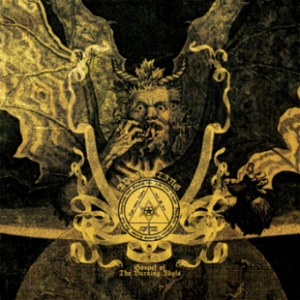 A side band of Maurice De Jong (Gnaw Their Tongues) with Eric from Mowlawner, Aderlating embraces some of the same power electronics/harsh noise sensibilities, but casts them within a different sonic murk, alongside demonic black metal snarls and flailing free jazz drumming. Somehow, those disparate parts work together in ways that sometimes baffle in the best possible way.
A side band of Maurice De Jong (Gnaw Their Tongues) with Eric from Mowlawner, Aderlating embraces some of the same power electronics/harsh noise sensibilities, but casts them within a different sonic murk, alongside demonic black metal snarls and flailing free jazz drumming. Somehow, those disparate parts work together in ways that sometimes baffle in the best possible way.
"Opening of the Tomb," a fitting introduction, actually encapsulates the best moments of this album.From its simmering bass heavy noise introduction, chiming ritualistic strings and guttural incantations, it manages to stay just on the respectable side of corny.With the slow introduction of marching drums and the mix becoming so chaotic as to devolve into a sprawl of noise in its closing moments, a strong sense of composition is there to be had.
Composition in a more conventional sense shows up on "A Vulture's Tongue Disease" via the droning subterranean electronics, bits of what may be guitar, and oddly distant and brittle drumming.With these components and the monstrous vocals, it actually comes together as a song structurally, while still retaining chaos and rawness.
"Dragged to the Smouldering Pits of Infinity" also takes a more melodic tact, hiding a haunting synth passage beneath chaotic drumming and heavily processed snarls.Probably most complex is "Spewed on by Slaves of Inhumanity," with its immediate distorted kick drum introduction and siren like melodies.Amidst the thin, bitcrushed noise and acidic cymbals, a notable, but hazy musicality arises, nicely paired with some hyperkinetic, jazz like drumming throughout.
From the intentionally vulgar song titles to the "16th century woodcarvings meets Photoshop" art design, Gospel of the Burning Idols is presented in a way to stay entrenched in the death industrial/black metal scene, which belies the moments of genuine innovation that can be heard.While it certainly has a sound consistent with these often stigmatized genres, it does not stay rooted in the clichés and instead spreads outward into lesser traveled concepts and ideas.
samples:
 
Read More
- Administrator
- Albums and Singles
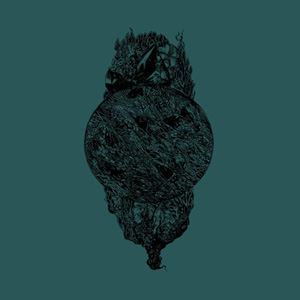
Agarttha is a solo project of Francesca Marongiu, who is also half of the Italian project Architeuthis Rex, and to some extent that project is reflected in this album. A similar noise/industrial/metal hybrid shines through, but Marongiu’s project stands out with its slightly lighter, vocal centered approach, and the six songs manage to capture occasional moments of blackened, dissonant experimentalism with segments of pure, unadulterated beauty.
A Water Which Does Not Wet Hands is not tied down to any specific sound, but one constant is the understated, yet beautiful vocals throughout.There is not any easy comparison to make as far as her individual approach, but her hushed, largely unprocessed voice fills each song with a distinct warmth, never overshadowing what is going on around it but instead providing a human element when often there is no other.
To some extent it is her vocals that tie things together as an actual album, because there is a lot of stylistic shifts around her voice."Lambsprinck," for example, is a subtle guitar squall and echoing bass throb that is paired with hand percussion, leading to a sort of folk/progressive sound, the latter of which is emphasized when a boisterous organ passage pops in at the end.
This is quite different from the depressing electronics and echoing drums of "Melusine," which has a gothic, but tasteful feel throughout.As the percussion cranks up and a guitar lead swoops in, it takes a dramatic turn for the best, resulting in an extremely engaging piece of music.On "Chymische Hochzeit," the pounding drum machine and overdriven low end gels together like a female lead Godflesh/Jesu hybrid that works extremely well.
"Storms as He Walks" goes in an idiosyncratic direction, with a more varied percussion style mixed with jagged, overcompressed guitar riffs that defy any sort of classification.While it might not be as immediately memorable as "Melusine" or "Chymische Hochzeit," it definitely stands strong from an artistic standpoint.For me it is only "The Sphynx" that drags a little.There is nothing lacking about its intentionally stiff, programmed drums, sitar-like bent guitars and multitracked vocals, it just does not stand out as being quite as unique as the other five songs on the album.
While it is unclear how much of a role Antonio Gallucci (Marongiu's partner in Architeuthis Rex) plays on this album, it is clearly Francesca's show.The influence of AR can be heard; no doubt because of the shared personnel, but A Water is a warmer, more inviting album that does not conjure up the same intense imagery.Instead the two projects compliment each other beautifully, each one showcasing different sides to the sound, with AR embracing more of the metal/noise elements, and Agarttha focusing on more delicate, ethereal moments.
samples:
 
Read More
- Administrator
- Albums and Singles
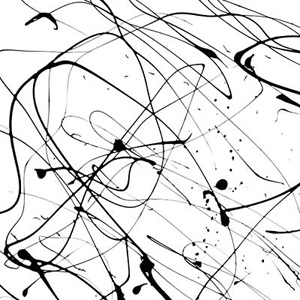 In his March 3rd interview with Ibiza Voice, Martin Müller proudly lists the synths, drum machines, and effects units he used to make Behind, his first album without youANDme partner Daniel Stroeter. Among others, he names: the Waldorf Microwave 1 and Roland Alpha Juno 2, the TR-808 and TR-909, the Jomox Xbase 888, a Verona DRM, a Moogerfooger, a Sherman Filterbank, and various other resonators, compressors, and equalizers. He loves his gear, and every song on Behind begins and ends with it. Whatever the results— jet black Detroit house, dub, ambient noise, or some other variety of electronic music— Martin’s machines matter most. Everything else comes second.
In his March 3rd interview with Ibiza Voice, Martin Müller proudly lists the synths, drum machines, and effects units he used to make Behind, his first album without youANDme partner Daniel Stroeter. Among others, he names: the Waldorf Microwave 1 and Roland Alpha Juno 2, the TR-808 and TR-909, the Jomox Xbase 888, a Verona DRM, a Moogerfooger, a Sherman Filterbank, and various other resonators, compressors, and equalizers. He loves his gear, and every song on Behind begins and ends with it. Whatever the results— jet black Detroit house, dub, ambient noise, or some other variety of electronic music— Martin’s machines matter most. Everything else comes second.
Müller underlines his focus on color and texture from the get-go. After the brief, weightless wash of "Entrance," "Perception" hits with wave after wave of staccato synthesizer sound. Over and over again, the same emphatic pulse pushes through the air, throbbing insistently for every second of the song’s almost six minutes. Riding on the crests of those electrical waves is a foamy mix of vocals, percussive accents, and other sound effects, like field recordings. Some of them pop off the rhythmic background and fizzle out, others get tucked into the mix and work away secretly beneath or within the persistence of the bass drum. But the elements are always simpatico, in some cases just a hair's breadth removed from each other.
This is how Martin works. He hypnotizes first with hammering rhythms and catchy melodies, then woos with slick, but seriously deep textures and sound effects, wrapping them all together in a way that makes taking them apart impossible. Nearly every song proceeds that way: the beat provides the canvas and the textures provide the color, as well as the energy and intrigue. Müller pulls it all off by concentrating on the smallest units. He builds his songs thinking less about form and more about how and where sounds will mingle. All the repetitive passages, small variations, and mirrored rhythms, techno-flavored as they are, pay more homage to tone color, texture, and density than to the almighty beat.
Ambient passages help break the album up and give it some formal variety, although they feel secondary to the rhythm-centric productions. Müller definitely shines brightest when he’s messing with club-approved fare, adding depth and subtracting flash in favor of subtlety. The way he handles the vocal tracks still amazes me. The first time through those vocals were the biggest obstacle to my enjoying the record. Repeat listens quickly removed that obstacle. Thinking about it now, they are a little corny, but Martin uses them to such good effect that it doesn’t matter. By the end of the record they have disappeared into the machines that Müller so adores.
samples:
Read More
- Administrator
- Albums and Singles
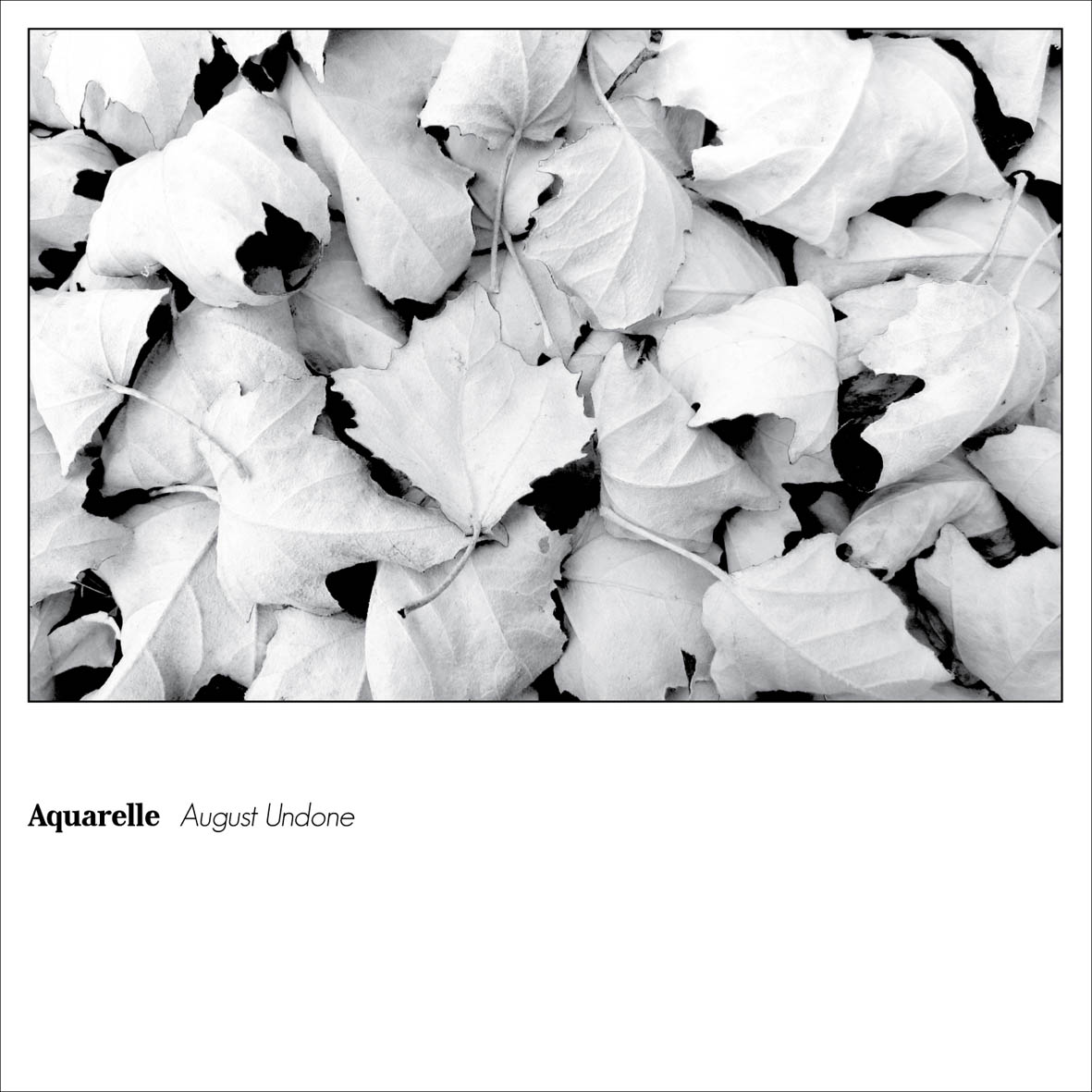 Aquarelle's second album for Students of Decay caught me off-guard a bit, as Ryan Potts' aesthetic has evolved noticeably from 2011's Sung in Broken Symmetry, but not in the expected way at all.  Rather than playing up his talents for crackle, hiss, and artful obfuscation, August Undone mostly jettisons those elements in favor of a kind of a jacked-up, guitar-noise-heavy pastoralism.  While I was a little disappointed that none of the new pieces were immediately striking as Symmetry's "With Verticals," this more understated follow-up is a more complex, varied, and lushly absorbing whole.
Aquarelle's second album for Students of Decay caught me off-guard a bit, as Ryan Potts' aesthetic has evolved noticeably from 2011's Sung in Broken Symmetry, but not in the expected way at all.  Rather than playing up his talents for crackle, hiss, and artful obfuscation, August Undone mostly jettisons those elements in favor of a kind of a jacked-up, guitar-noise-heavy pastoralism.  While I was a little disappointed that none of the new pieces were immediately striking as Symmetry's "With Verticals," this more understated follow-up is a more complex, varied, and lushly absorbing whole.
"With/Without" opens the album with a very strong statement of intent and foreshadowing of what is to come, as its warm tones and unusual, sitar-like guitar ripples are almost immediately engulfed by a dense guitar thrum mingled with washes of static or crashing waves.  Eventually, the eruption subsides and the piece returns to a variation on its original motif, only this time the sublimely floating guitars cohere into a pulsing rhythm accompanied by some understated percussion.
Perhaps feeling that he may have erred too much on the side of "nice" with the lead-off piece, Potts opts for a bed of heavily distorted guitar for the lengthy "This is No Monument."  Well, at first, anyway.  That piece quickly takes an unexpected detour too, blossoming into a simple, repeating piano pattern that initially resembles classical minimalism, but gradually becomes looser and more sustained until it dissipates entirely into warmly droning reverie.  It might be least lazy drone reverie that I have ever heard though, as Potts turns it into something vibrant and unusual with a host of buried noises and something that resembles several guitarists tremolo-picking variations of the same arpeggio at once on treated guitars (they have an oddly metallic, harpsichord-like texture).
The second half of August Undone is less prone to unexpected twists and detours, but is not at all lacking in strong themes.  In fact, I prefer it to the first half.  "A Flare," for example, resembles a particularly hallucinatory gondola trip, as its bright, shimmering chord progression sounds vaguely Spanish or Italian, but it is bolstered by a second-half geyser of gnarled, shoe-gaze-damaged guitar roar.  "Sandpaper Winds," on the other hand, is a fairly straightforward drone piece structure-wise, but it transcends that wonderfully through inspired multilayering and a host of complementary textures (buzzing guitar noise; reverb-heavy piano plinking; sharp, clear acoustic guitar strums; high, melancholy-sounding EBow tones, etc.).
Potts opts for a similar structure for the strong closer "Clockless Hours," but nicely enhances his quivering, oscillating guitar shimmer with some swooping and moaning cello from guest Brandon Wiarda.  More than any other piece on the album, "Clockless Hours" demonstrates that Potts has become a serious and formidable composer–it is very easy to imagine someone of Harold Budd's stature recording something similar and thinking "This is one of the best things that I have ever done."
Potts' greatest gift, however, might be as a producer: while he admittedly had some mastering assistance from the omnipresent James Plotkin, some of these pieces reportedly used all 64 tracks of Ryan's digital workstation and it sounds like it.  I mean that in the best possible way, as there is an enormous amount of small-scale and peripheral activity happening at all times, making August Undone sound very engaging and alive.  Equally impressive, Potts managed to juggle all of those tracks without  ever sounding muddy or overblown.
Since I am me, I (of course) still have some small quibbles, but they mostly relate to my extremely subjective taste, as I wish August Undone's warmth and beauty had been balanced out by a bit more dissonance, chaos, and grit.  There are certainly a lot of roaring, distorted guitar passages to be found, but only  "A Flare" gets gnarled enough to offer any threat to Ryan's meticulously crafted idyll, as most of the other eruptions seem intended to provide heft and texture only (the oceanic immensity of prime shoegaze is there, but none of the edge or warp-age).  More objectively, Potts could also benefit from a lighter touch in regard to said eruptions, as it sometimes seems like they are operating from an on/off switch rather than intertwining organically with the other sounds.  Such concerns are very minor when compared to August Undone's successes, however–this is both an excellent album and an impressive evolution.
 
Read More
- Administrator
- Albums and Singles
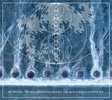 This new album continues the trend of Michael Page's 2012 album, There I Saw the Grey Wolf Gaping, balancing massive, epic length pieces with shorter ones and a slew of diverse collaborators (Nocturnal Emissions, Vomit Arsonist, Slogun, and others) to push his work even further into its own unique, esoteric sonic space.
This new album continues the trend of Michael Page's 2012 album, There I Saw the Grey Wolf Gaping, balancing massive, epic length pieces with shorter ones and a slew of diverse collaborators (Nocturnal Emissions, Vomit Arsonist, Slogun, and others) to push his work even further into its own unique, esoteric sonic space.
At five songs and well over an hour in duration, Pas is definitely not a light, buoyant work.Opener "Na Fir Ghorm" is the shortest, clocking in at around eight and a half minutes, and sets the stage similar to last year's "Carne[val]", although this time with Nigel Ayers contributing.The stuttering, static laden rhythm and bent music box sounds put an occult spin on carnival trappings, made all the more excruciating by the pained bagpipes of Craig McFarlane.
The title piece follows, a bit more collage-like overall with its quaking, apocalyptic crashes and junk metal percussion, with an occasional guitar-like squall slipping through.Through its insect like buzzes and interlocking layers of noise, it builds to a disorienting haze that mercifully relents up a bit in its closing minutes, giving a needed relief."Vessel-Abstractions" (featuring contributions from John Balestreri of US power electronic legend Slogun) is structurally similar, although a bit more simplistic in its approach.Subterranean echoes and spectral drones are occasionally interrupted by thin analog synth passages and distant banging noises.As it devolves into a primordial muck of noise and reverb, it is extremely effective, although not as singular sounding as others on the album.
At nearly 21 minutes, "The Longest Day Heralds the Darkness to Follow" makes for the definitive centerpiece to the disc.At first understated, there is a leviathan like lurk just out of reach, even amidst the relatively more understated moments.Pulsing synths underscore grandiose strings, with occasionally identifiable piano melodies making it through the fog.While still a dark, oppressive feeling throughout, there are almost hints of lightness to be had, like those final dying rays of sun hinted at from the title.
Closing piece "Fuligin Cloak" is a bit more basic structurally, at least in comparison to what preceded it.An engine revving into opaque space, there is an impregnable wall of sound (aided by Andrew Grant, a.k.a. the Vomit Arsonist) that stays throughout, dense but not overly oppressive, with layers of electronics and subtle percussion keeping the piece from becoming stagnant.As a whole it follows the trend from "The Longest Day…", allowing a bit of sunlight into the cavernous layers of noise.
Like There I Saw the Grey Wolf Gaping, there is a strong sense of consistency from piece to piece, but even with the diverse roster of collaborators, it feels singularly like Page’s album.Hints of later period Coil and early Current 93 show up here and there, but as influences and not emulations.Sky Burial albums have been on an excellent trajectory, with each one topping the brilliance that followed it, and Pas is no exception at all.This is Michael Page at his fully realized and actualized, and it is a mesmerizing work from start to finish.
samples:
Read More
- Administrator
- Albums and Singles
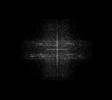 Mixing old with new both in technology and imagery, Montreal's Aun (Martin Dumais and Julie Leblanc) capture the audio aesthetic of time worn 1970s low budget sci fi film soundtracks via a malfunctioning TV, sometimes erring into abrasive territories, and other times coming across like lost four track Tangerine Dream demos rotting in an attic. Modern MIDI equipment clashes with unreliable analog technologies to produce a sound that is as retro sounding as it is innovative.
Mixing old with new both in technology and imagery, Montreal's Aun (Martin Dumais and Julie Leblanc) capture the audio aesthetic of time worn 1970s low budget sci fi film soundtracks via a malfunctioning TV, sometimes erring into abrasive territories, and other times coming across like lost four track Tangerine Dream demos rotting in an attic. Modern MIDI equipment clashes with unreliable analog technologies to produce a sound that is as retro sounding as it is innovative.
With titles like "Koenig," "Vulcan," and "Voyager," the imagery is pretty clear on Alpha Heaven, but the sound itself is not as cliché riddled as it could be at first glance.For all the titles, there is nary an overwrought synth bleep or ray gun sound effect to be had.Instead, the album is more subtle and musical in its approach.Some of the songs are definitely more rock oriented, like the overt guitar and clipped bass rhythms of "Koenig" and the dramatic thrust and percolating keyboards of "Alpha."  However, it all is enshrouded in a low fidelity haze that makes it feel like a garage rock band’s demo from the past, which adds a warmth to the experience rather than detracting from it.
Ambient, both traditional and of the darker variety, is spread throughout, and the moments that resonated most with me are the ones where drum programming appears, such as the heavily echoed beats of "Viva."  That, meshed with the sharp, processed guitar was like a throwback to the days of ambient dub, such as Deliverance/Colossus/Evanescence era Scorn.The same applies to "Voyager," with its dubby echoes and fragmented voices recalling a more immediate, engaging Bill Laswell track from the mid 1990s.
The echoing wash of vocals on "War is Near" and the aforementioned "Voyager" give those songs a distinctly different sound, with Leblanc's voice processed enough to sound like another instrument, but still retaining enough of its human quality to stand out.The former, despite its menacing title actually has one of the lighter vibes on the album.
There are a few moments that feel a bit more like filler in comparison, such as the sputtering, flanged tones of "Vulcan" and sparse moments of "Peacecalm" that simply do not stand out as unique amidst the other, more complicated compositions.Even the light, synth heavy "Floodland," which is also rather underdeveloped on its own, is fleshed out with some obvious guitar focused passages that help it come together well.
What Alpha Heaven boils down to is a multitude of great songs with a unifying feel to them, with a few pieces throughout that simply do not manage to engage quite as well.As a whole though, it does an admirable job of conjuring that mood: lazily watching B grade science fiction movies via a television with questionable reception:something I can remember occasionally doing myself as a child.It hits the right balance of low fidelity production, creative structures, and the warmth of times passed.
samples:
 
Read More
- Administrator
- Albums and Singles
 Robert Haigh is a veteran of UK underground music from the early eighties onwards. In the eighties he worked on seminal Nurse With Wound albums and released a series of darkly ambient albums and EPs under the name Sema. The nineties saw Haigh experimenting with atmospheric textures and sequenced rhythms under the name Omni Trio. From the mid naughties onwards Haigh has returned to his love of minimal piano counterpoint with releases on Seal Pool, Crouton, Siren and now Primary Numbers.
Robert Haigh is a veteran of UK underground music from the early eighties onwards. In the eighties he worked on seminal Nurse With Wound albums and released a series of darkly ambient albums and EPs under the name Sema. The nineties saw Haigh experimenting with atmospheric textures and sequenced rhythms under the name Omni Trio. From the mid naughties onwards Haigh has returned to his love of minimal piano counterpoint with releases on Seal Pool, Crouton, Siren and now Primary Numbers.
Release date: September 17, 2013
Darkling Streams is the awaited follow-up to the acclaimed trio of piano albums released on Siren Records between 2009 and 2011. Taking up where the Siren trilogy left off, Darkling Streams is a collection of piano miniatures with occasional wisps of shimmering electronic texture. As with the Siren releases, the pieces are intimate, atmospheric, hauntingly melodic and introspective. Shades of Satie, Harold Budd, Arvo Part, Glass and Sakamoto can be detected in these works but never to the extent of overshadowing Haigh’s distinctive expression and harmonic preoccupations. This current set stands apart, however, with the inclusion of a handful of extended pieces. Tracks such as “Fugue State,” “Of Eros And Dust,” and “Rain For Avalon” have an epic and darkly cinematic quality not heard on previous albums.
tracklist:
- Fugue State
- Remains Of A River
- Twice Solitaire
- Cage Of Shadows
- Darkling Streams
- Ipcress Girl
- Lunaire
- Mysterious Lights
- Of Eros And Dust
- Air Cerulian
- A Plague Of Notes
- Crepuscule
- Crepuscule 2 – [SOUNDCLOUD STREAM]
- Circle Of Deranged Fifths
- End Title
- Rain For Avalon
Memorable melodies, ghostly harmonies, yearning phrases, and tense, frequently circular rhythms are often the only figures populating his songs, and with them he draws up a surprisingly diverse cast of expressions and feelings. – Laughtrack
Whether circular or linear, these tuneful, minimal melodies are truly precious pieces, black-and-white snapshots only just beginning to yellow and curl at the edges. – Igloo
You’d think Haigh’s choice of instrumentation — primarily piano — would act as a limiter rather than a liberator, but the opposite is in fact true. More evidently, Haigh’s channeled a number of his contemporaries (Steve Reich and Susumu Yokota spring instantly to mind) to give these pieces authoritative heft. – The Squid’s Ear
Whether circular or linear, these tuneful, minimal melodies are truly precious pieces, black-and-white snapshots only just beginning to yellow and curl at the edges. – Igloo
discography:
- “Notes from Underground” and “Theme from Hunger” (as Sema), Le Rey Records 1982
- “Extract from Rosa Silber” (as Sema), Le Rey Records 1983
- “Three Seasons Only,” Le Rey Records, 1984
- “The Sylvie and Babs H-Fi Companion,” (with Nurse with Wound), United Dairies, 1985
- “Juliet of the Spirits,” LAYLAH Anti-Records, 1985
- “Spiral Insana,” (with Nurse with Wound), United Dairies, 1986
- “Music from the Anti-Chamber,” LAYLAH Anti-Records, 1986
- “Valentine Out Of Season,” and “The Best Of Robert Haigh,” United Dairies, 1987
- “A Waltz In Plain C,” Le Rey Records, 1989
- “A Sucked Orange” (with Nurse with Wound), United Dairies, 1990
- “Music for the Next Millennium” (as Omni Trio), Sm:)e Communications, 1995
- “Haunted Science” (as Omni Trio), Moving Shadow, 1996
- “Skeleton Keys” (as Omni Trio), Moving Shadow, 1997
- “Even Angels Cast Shadows” (as Omni Trio), Moving Shadow, 2001
- “From the Air” (with Silent Storm), Seal Pool, 2007
- “Written On Water,” Crouton 2008
- “Notes And Crossings,” Siren 2009
- “Anonymous Lights,” Siren 2010
- “Strange and Secret Things,” Siren 2011
Read More
- Administrator
- Albums and Singles
 Jack Dangers has been recording, performing, and releasing music for nearly three decades in Meat Beat Manifesto, Tino Corp, and Perennial Divide. Dangers’ resume as a producer and remixer includes David Bowie, Depeche Mode, Nine Inch Nails, Coil, Merzbow, Twilight Circus, Public Enemy, Cranes, David Byrne and many, many more. Apart from the noise, beat, and dub driven Meat Beat Manifesto, Dangers has released numerous solo recordings probing the depths of sound of analogue synths and tape manipulation on labels such as Important Records, Shadow Records, Bella Union, Brainwashed, and his own Tapelab and Flexidisc imprints. Bathyscaphe Trieste is more in line with his critically acclaimed releases such as the Forbidden Planet Explored, Music for Planetarium, and Electronic Music from Tapelab.
Jack Dangers has been recording, performing, and releasing music for nearly three decades in Meat Beat Manifesto, Tino Corp, and Perennial Divide. Dangers’ resume as a producer and remixer includes David Bowie, Depeche Mode, Nine Inch Nails, Coil, Merzbow, Twilight Circus, Public Enemy, Cranes, David Byrne and many, many more. Apart from the noise, beat, and dub driven Meat Beat Manifesto, Dangers has released numerous solo recordings probing the depths of sound of analogue synths and tape manipulation on labels such as Important Records, Shadow Records, Bella Union, Brainwashed, and his own Tapelab and Flexidisc imprints. Bathyscaphe Trieste is more in line with his critically acclaimed releases such as the Forbidden Planet Explored, Music for Planetarium, and Electronic Music from Tapelab.
In 1960, a two-person bathyscaphe (“deep boat”) named Trieste reached a record maximum depth in the deepest known part of the Earth’s oceans, the Challenger Deep, in the Mariana Trench near Guam. The five hour descent was made possible by the earth’s gravitational pull on nine tons of lead shot, while the three hour ascent was aided by a balloon filled with gasoline. Only James Cameron has returned to the Challenger Deep, and is allegedly in production of a film of the journey. Dangers’ composition honoring this journey is the product of years of work, featuring super slowed down tape manipulations of anlog sythesizers (often 30x as slow), bounced from machine to machine to achieve the appropriate soundtrack for a vessel on an exploratory journey into uncharted depths under massive amounts of physical pressure. Jack’s intention was to create music from a mysterious world which mixed at the bottom of the Mariana trench at the Challenger Deep Bedroom Quilt Studio. The disc comes with CD-ROM content of 35 minutes of video footage edited and set to music by Jack Dangers.
Release Date: September 17, 2013
tracklist:
- Blast Off
- Epipelagic Zone
- Mesopelagic Zone – [SOUNDCLOUD STREAM]
- Bathypelagic Zone
- Abyssopelagic Zone
- Hadalpelagic Zone
- Resurfce
Watery crescents delight with the soul of an analogue-based futuristic technology, leaving the audience with a wide span of trans-space that competes with the vortex of the unknown. – Igloo
Jack has the world’s only functioning EMS Synthi 100, and, damn it, he’s gonna use it. – XLR8R
discography:
- “Sounds of the 20th Century,” Flexidisc, 2000
- “Tape Music,” Flexidisc, 2001
- “Variaciones Espectrales,” Bella Union, 2002
- “Forbidden Planet Explored,” Important Records, 2004
- “Loudness Clarifies/Electronic Music from Tapelab,” Important Records, 2004
- “Music for Planetarium,” Brainwashed Handmade, 2008
- “Test Signals,” Tummy Touch, 2012
Read More
- Administrator
- Albums and Singles
 Sachiko has been involved in the Japanese music scene since the late 1980s, but recent releases have shown a growing sense of experimentation that is as beautiful as it is dark, quite often within the same composition, such as on Loka in the Black Ship. Sometimes delicate, sometimes harsh, but never forgettable, it is a high point in a strong run of solo and collaborative records.
Sachiko has been involved in the Japanese music scene since the late 1980s, but recent releases have shown a growing sense of experimentation that is as beautiful as it is dark, quite often within the same composition, such as on Loka in the Black Ship. Sometimes delicate, sometimes harsh, but never forgettable, it is a high point in a strong run of solo and collaborative records.
While she is a multi instrumentalist, it is her use of voice that stands out the most throughout these seven pieces.It can be heard on almost every song here, in drastically different contexts.On "Der Fliegende Devadatta," uncomfortable undulating electronics set the stage, while her voice is shaped and molded into guttural noises and animalistic grunts, resulting in a rather disturbing, monstrous sound overall.
On "Black Cakam," what sounds like scat singing through a bank of digital effects becomes the foundation for a piece of harsh noise that builds into feedback and shrill squeals that is pleasantly painful and chaotic.The 17-plus minute "Loka" is the centerpiece of the album, and has a feel more akin to a early to mid period Merzbow album, bathed in reverb with occasional bits of voice coming through.It is harsh and a bit reminiscent of Junko's vocals with Hijokaidan, but not quite as extreme.It is abrasive and aggressive, but diverse enough to stay engaging as more than just a noise piece.
Other moments on the album are far less divisive. The open and spacious "Last Day" has Sachiko's voice largely unprocessed and delicate, but with its distant feel it comes across as both gentle and slightly disconcerting."Return" is even more light and airy, with her voice creating a beautiful, yet haunting ending to an album that covers a lot of moods and feelings throughout.
I have followed Sachiko's most recent albums in the past few years, and while they have all been exceptionally well done, I must say that Loka feels the most fully realized, and is the most diverse of them.It covers both the beautiful and ugly sounds in her repertoire, and whether hushed or harsh it is fascinating.
samples:
 
Read More
- Administrator
- Albums and Singles
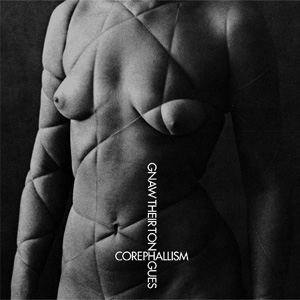
On the second solo release from Shane Broderick (of the delightfully juvenile and inappropriate Twodeadsluts Onegoodfuck), there is a sense of developing composition and maturity to be had, mixing his harsh noise and power electronic tendencies with more of a dark ambient sensibility. Paired with the Dutch project on the other side of the 10" going for a death industrial/Cold Meat Industries throwback sound, there is a great old school noise sensibility to be had on here.
Lascivious Aesthetics/Apop Records
The two songs from Broderick expand on the analog heavy sound he started with on the self-titled 3" CD from 2009."Abandonment" is all dour synths and churning bass for its early minutes, but as it goes on harsher, heavy electronics come in to balance the funeral dirge with a power electronics squall."Rapes of Convenience" again emphasizes the low end of the spectrum, but with the synths meeting with controlled feedback passages and shrill, demonic voices that ends rather abruptly.
On the flip side, Maurice De Jong works heavily with slowed down, bass ridden machinery noise on "A Moral Guide to Self-Castration and Necrophilia."That paired with crashing and banging reverberated drones is in league with some of the better Brighter Death Now material.This is made all the more apparent when some harsh noise outbursts start popping out, and demonic, screeching voices cut through violently.
This is a bleak, depressing record, and that is exactly as it should be.From its overall sound and presentation, it reminded me of that mid to late 1990s CMI/Tesco scene that has been severely lacking in recent years.It is not a record that is going to make either artist a crossover media darling, but for the fans of the genre such as myself, it is a wonderfully unpleasant throwback to a time in difficult and extreme music that has seemingly passed the world by.
samples:
 
Read More
- Administrator
- Albums and Singles
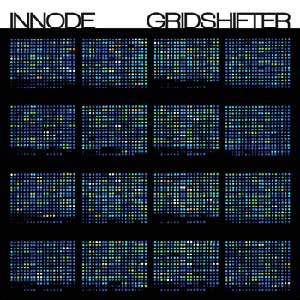
For the debut recording under the Innode moniker, Stefan Németh works closely with exceptional drummers Steven Hess and Bernhard Breuer on this conceptual album that intentionally juxtaposes human imposed rhythms (both programmed and played) with live and machine generated improvisations. The result is a compelling, synthetic heavy sound, that especially hits its stride on the B side that transitions from conceptual sound to engaging music.
The first half of this LP is front loaded heavily with the two part "Dedispersion I" and "Dedispersion II," and then followed up with a series of short, less impressive experiments.The "Dedispersion" pieces owe a notable debt to the glitch scene of the late '90s but with a fresh, updated sound that sounds much more compelling and unique.Bleeping sounds and white noise skittering beats come together to bear more than a passing resemblance to a skipping CD, which are slowly expanded upon with melodic synth passages and more fleshed out beats.The second segment emphasizes Breuer’s drumming more, sneaking a natural, human sound into an inorganic one that slowly becomes more and more fragmented as it goes on.
On the flip side, both "Gridshifter 05" and "FS Revisited" stand out as exceptionally powerful compositions.The former’s opening reverberated noise and simple mechanic throb is rather rudimentary, but when Hess’ cymbal heavy live percussion begins to weave in and out of the composition, it builds into a grandiose, dramatic outburst that is catchy in more than just a clever sort of way.Slowly throughout the six minutes the patterns shift and change rather strongly."FS Revisited" takes a similar approach; a bass throb leads off and then is cut up by razor sharp live percussion.The layers build and build, with complex rhythms and rich synths coming to a heavy, harsh crescendo that is just perfectly paced and extremely compelling.
The shorter pieces that surround these two, however, come across as less realized and, while not bad in any way, just are not as memorable."Cumbre Vieja" is the only one that approaches a full length song, and the twinkling synths and clicking imperfections that come together as a wall of harsh noise work in an experimental sense, but with the two major pieces that precede it, it just pales in comparison.The short "Rotor" fares rather well, even though its stripped down brittle metallic beats lack the same punch, it does take on a nice Neu! sound by the end.
If there is one thing I am definitely taking away from Gridshifter, it is that Németh is at his best when collaborating with a live percussionist.While his synth heavy programming and static beats work well, they simply do not stand out as much from similar artists working with cold, conceptual electronics.When meshed with the live drumming though, such as his work in Radian, the results are sublime and quite memorable when played at a nice, rib cage rattling level.
samples:
 
Read More

